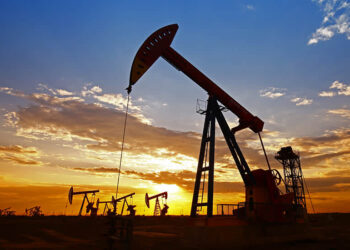In a statement on Monday, Treasurer Jim Chalmers cautioned Australia is “not immune from volatility and uncertainty in the global economy”, pointing out the downward trajectory of iron ore prices holds repercussions for the federal budget.
The commodity has seen significant price movements in the last eight months, starting the year at some US$144 a tonne, buoyed by hopes of a strong Chinese economic rebound, only to decline to US$81 a tonne by mid-August, which is below the price Treasury had forecast at this point.
The week of 12–16 August saw the price of iron ore fall 7.5 per cent in total and marked its lowest level since late 2022.
According to Treasury’s previous estimates, prices were expected to sit at around US$83 at this point and settle at some US$60 by March 2025.
However, Treasury’s latest analysis warns the federal budget faces an almost $3 billion hit over the next four years if iron ore prices slump to US$60 by the end of this quarter, spurred by softness in the Chinese economy.
The recent decline has also been partly fed by China’s Baowu Steel Group, the world’s largest steelmaker, suggesting a downturn in the Chinese steel industry could turn out longer than expected.
“Softness in the Chinese economy and the recent fall in iron ore prices are another reminder that we are not immune from volatility and uncertainty in the global economy,” said Chalmers in a statement.
“We’re following these developments very closely because of their potential impact on our economy and our budget.”
He added that, in the last two years, the government has successfully managed to deliver back-to-back surpluses.
“We’ve always put a premium on responsible economic management, and that’s especially important amidst all this global uncertainty,” Chalmers said.
Reflecting on Treasury’s recent analysis, AMP’s chief economist, Shane Oliver, agreed the trajectory of iron ore prices are “a bit of a worry for Australia at the moment”.
“Over the last two years, the government has been a beneficiary of windfall revenue gains driving budget surpluses [and] a big part of this was higher-than-expected iron ore prices,” he said.
“This is now under threat again with the iron ore price falling again on the back of worries about Chinese demand in the face of weaker growth and stockpiles.”
Treasury has previously forecast a deficit of $28.3 billion for 2024–25.
Oliver noted a $3 billion dent over four years, while not a significant blow compared with the size of the overall budget, could fuel concern in removing the potential for upside surprises.
“It could be a sign that the windfall gains of the last few years are behind us,” he told InvestorDaily.
Additionally, amid claims of increased public spending contributing to inflationary pressures, Oliver highlighted a budget deficit could result in a “degree of vulnerability” for a government that has often signalled responsible economic management in its policy responses.
Last week, Reserve Bank of Australia (RBA) governor Michele Bullock flagged China as a “very pertinent risk”, alongside escalating geopolitical tensions.
Speaking at the House of Representatives economics committee on Friday, she said: “China is really important for us because of our trade relationship with China, it’s our biggest trading partner.
“It’s very important in particular for the prices of the commodities that we export, in particular iron ore. So that is something that we’re watching quite closely.”
According to Oliver, the RBA would “certainly” be keeping an eye on recent price movements on iron ore, given it remains a key driver for national income.
“One of the things supporting the Australian economy in the last few years, despite the rate hikes, has been strong growth in national income,” he said.
“It’s a blow to our national income when [iron ore prices decline] and if it goes below expectations, it will clearly become more of a drag.”
Looking ahead, the chief economist cautioned that prices could keep slipping in the short-term, but the tides could still reverse with potential Chinese government intervention.
“That could turn things around,” Oliver told InvestorDaily.
“That’s why it’s maybe dangerous to get too negative on the iron ore price – China does have a tendency to jump in, with some sort of stimulus, if the economy is too weak.”







